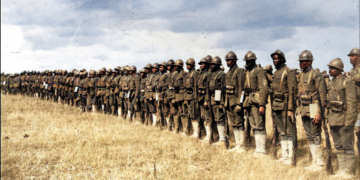Feb 28, 2025 Story by: Editor
The construction of the Panama Canal stands as one of the most remarkable engineering achievements of the early 20th century. However, the role of African Americans in this monumental project is often overlooked. Thousands of Black workers, primarily from the Caribbean, played a crucial role in building the canal under grueling and discriminatory conditions.
During the canal’s construction, which spanned from 1904 to 1914 under U.S. control, labor was divided along racial lines. The U.S.-run Panama Canal Commission (PCC) implemented a discriminatory “gold and silver roll” payroll system. White American employees were placed on the gold roll, receiving higher wages, better housing, and superior working conditions. In contrast, Black Caribbean and African American workers were relegated to the silver roll, receiving significantly lower wages and facing substandard living conditions.
According to La Autoridad del Canal de Panamá (Panama Canal Authority), almost 57,000 workers were employed during the construction of the Panama Canal. Of that figure, the overwhelming number was people of African descent.
The largest number of those workers—roughly 20,000—was from Barbados. Included among those seeking jobs in the Canal Zone were many West Indian women, some of whom followed their husbands, while others journeyed to Panama often for the same reasons as men—jobs and better pay, freedom, or adventure.
These workers endured perilous working environments, handling hazardous tasks such as dynamite blasting, excavating rock, and clearing disease-infested swamps. The tropical climate, rampant diseases like malaria and yellow fever, and a lack of adequate medical care further exacerbated the hardships they faced. Despite these adversities, their contributions were indispensable to the canal’s completion.
Historian Michael Conniff highlights the significance of Black labor in his book Black Labor on a White Canal, stating, “Without the thousands of Caribbean workers who toiled under oppressive conditions, the Panama Canal would not have been completed on schedule.” Likewise, Panama-based historian Gerardo Maloney notes, “The canal was built on the backs of Black workers who endured racial discrimination and immense suffering.”
Beyond their labor contributions, African Americans also influenced Panamanian society and culture. Many workers chose to settle in Panama after the canal’s completion, forming vibrant Afro-Caribbean communities that continue to shape the nation’s cultural landscape today.
Despite their pivotal role, the sacrifices of African American workers have often been overshadowed in historical narratives. However, recent efforts, including scholarly research and cultural initiatives, aim to acknowledge and honor their legacy.
As historian Julie Greene emphasizes in The Canal Builders, “The story of the Panama Canal is incomplete without recognizing the resilience and contributions of the Black workers who made it possible.” Their perseverance and labor remain an essential part of both American and Panamanian history.
Source: National Archives

















